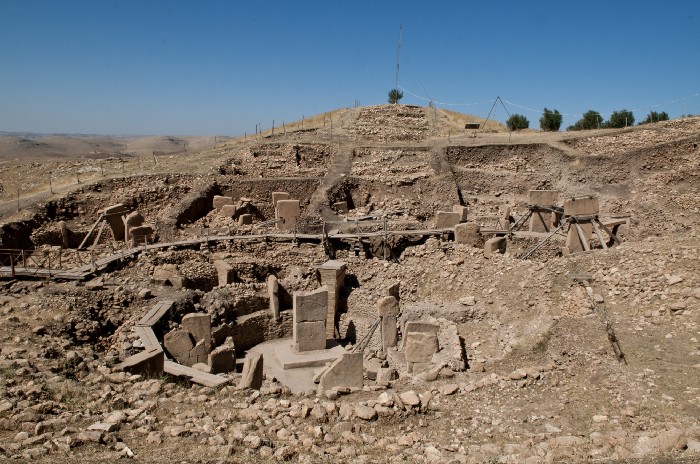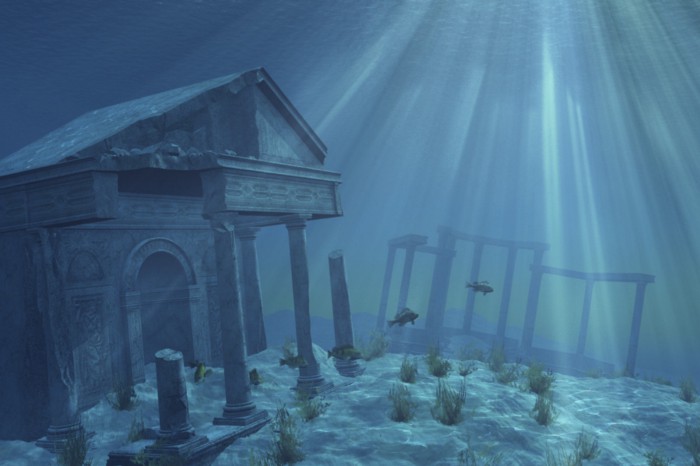Laurens Buijs
Amsterdam Gender Theory Research Team
We know that patriarchy (see AGTRT-BA9) has its roots in the Neolithic revolution, 12,000 years ago. With the start of large-scale agriculture, a different view of humanity and the world based on possession emerged: humanity owns the planet, and the man owns the woman (see also AGTRT-BA1).
But before then, humans probably lived in matriarchal structures for hundreds of thousands of years. What caused this major cultural shift? Why is it that our gentle, androgynous and agile primate species Homo sapiens suddenly started building a patriarchal system of vertical suppession and authoritarian rule some 12,000 years ago?
Our species is at least 300,000 years old, and as far as we know, our ancestors have always lived in matriarchal, horizontal societies. Cooperation, communication and equality were traditionally the keys to our survival success. As a result, in the game for survival on the Savannah, we managed to trump the other primate species. I detailed this argument in my article on gender among hunters and gatherers (see AGTRT-BA1).
Read more about the androgynous core of man:
What we can learn about masculinity and femininity from hunters and gatherers
Now 12,000 years may sound like a long time, but Homo sapiens probably lived another way for about 290,000 years. Only relatively recently in the existence of our species have we created authoritarian top-down structures driven by masculine values such as control, possession and domination.
What began 12,000 years ago continues to this day. We have now internalized this patriarchal form of society to the depths of our psyche, so we have come to see it as “normal”.
With the advent of patriarchy, two cultural assumptions about gender came into vogue that also still form the basis of our current society: gender and sex are connectes (men are masculine, and women are feminine, and thus man and woman are only complete in each other’s complement), and masculinity is valued higher than femininity.
Patriarchy put an end to a much more mystical view of humans, in which both men and women have masculine and feminine characteristics. This idea of humans as androgynous (men are also feminine, women are also masculine) is the starting point for matriarchal cultures (see AGTRT-BA1, AGTRT-BA5 and AGTRT-BA9). In these cultures, none of the genders is at the top of the pecking order, but co-exist in equality.
Read more on why humans cannot do without the distinction between masculine and feminine (2022):
Gender neutrality as an aberration: why emancipation cannot exist without masculinity and femininity
It is still a mystery what triggered this greatest cultural shift in human history. But recently, the first evidence has been found for a theory that says that is because of a giant comet impact.
According to Martin Sweatman, the University of Edinburgh scientist who examined the research into the comet impact, the impact is even described on the giant stone pillars of Göbekli Tepe in Turkey, the staggering temple complex some 12,000 years old. The oldest part of this complex must have been built just after the apocalyptic disaster.

Scattered across North America, Greenland and Europe, traces of a major impact that occurred some 12,900 years ago have now been found. The large impact area would indicate that there was not one large impact, but several.
Perhaps a large comet broke up into (still sizable) shards in the atmosphere, which then slammed into Earth piece by piece. Or perhaps our planet entered the orbit of a trail of cosmic debris, as the Taurids cause a meteor shower each year. In the latter case, large impacts may have occurred for days or even weeks at a time, which must have made such an impression on our prehistoric ancestors that they must have feared the end of time.
The giant impact would have been the largest since the one that wiped the dinosaurs off the Earth 66 million years ago. The impact would have been so substantial that it even knocked the Earth slightly out of orbit and disrupted the global climate for a long time. This is a plausible explanation for the sharp drop in temperature and sea level rise that began the Younger Dryas, also between 13,000 and 12,000 years ago. This is why the hypothesis is also called the Younger Dryas Impact Hypothesis (YDIH), which has been gaining ground in science in recent years.
The Young Dryas Impact Hypothesis puts the mythical stories of ancient spiritual island civilizations allegedly wiped out by a great flood (The Great Flood) in a behind-the-scenes light. Could those civilizations really have existed but been washed away by the apocalyptic impact disaster (see also AGTRT-BA10). For example, according to Plato, the island of Atlantis would have sunk about 9,000 years before his time, so by now about 12,000 years ago.

Either way, the impact must have been a major blow to human civilizations, which faced all sorts of catastrophes and major changes up to thousands of miles from the site of impact. Such a disaster may have halved the human population and must have thrown humanity into an unimaginable crisis, with the survival of the species at stake.
Could it be that patriarchy began 12,000 years ago with shock and fear? To this day, fear is the driving force behind patriarchy; that emotion makes us eminently susceptible to authoritarian power structures.
Could the fear caused by the impact have put humans into a radical survival mode, creating a break with our more natural tendency to live matriarchally (see AGTRT-BA9)? In this time of great turmoil on the planet, hierarchy has developed between the genders, and the feminine has come to serve the masculine (see also AGTRT-BA11). The shock of the comet impact was perhaps seized upon to build a pyramidal power society based on ego, control and possession, and sold as the only way to secure our survival.
If so, how do we free ourselves from a matrix of 12,000 years of fear and trauma? The only way is healing of our psyche. Only through tough and laborious shadow work can we heal this cleavage, which is the result of thousands of years of intergenerational trauma (see AGTRT-BA7). Shadow work is so hard for a reason!
Read my piece on our split psyche, and how it can be healed:
How patriarchy has split our psyche, and how we can repair the damage
But one day we break the cycle of fear, control and violence. And will we remember again how our ancestors lived from before the Neolithic revolution: horizontally, from the heart, and in balance with the planet (see AGTRT-BA10). That form of society is closest to our soft nature.

Leave a Reply